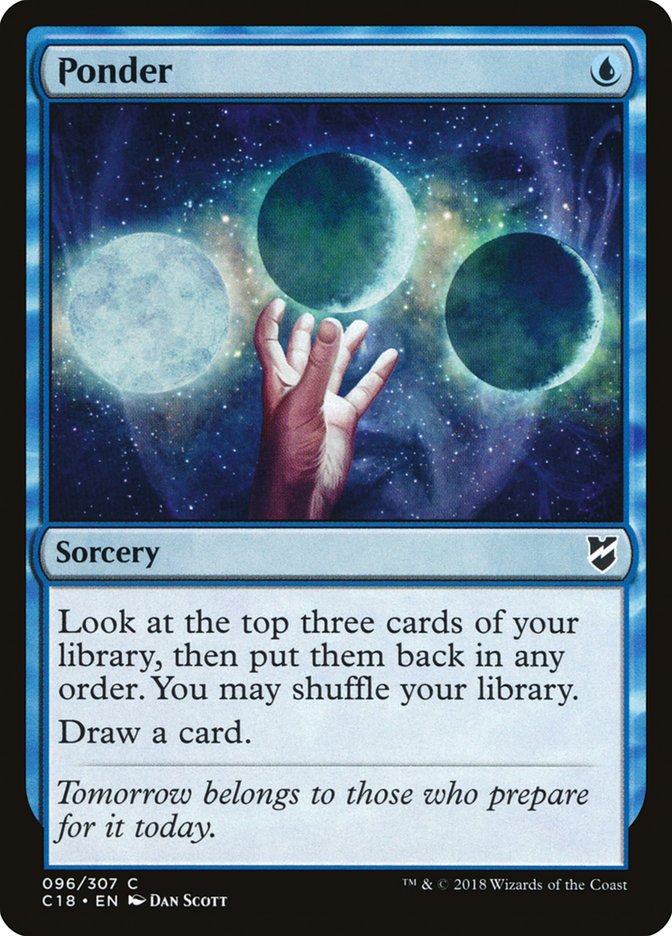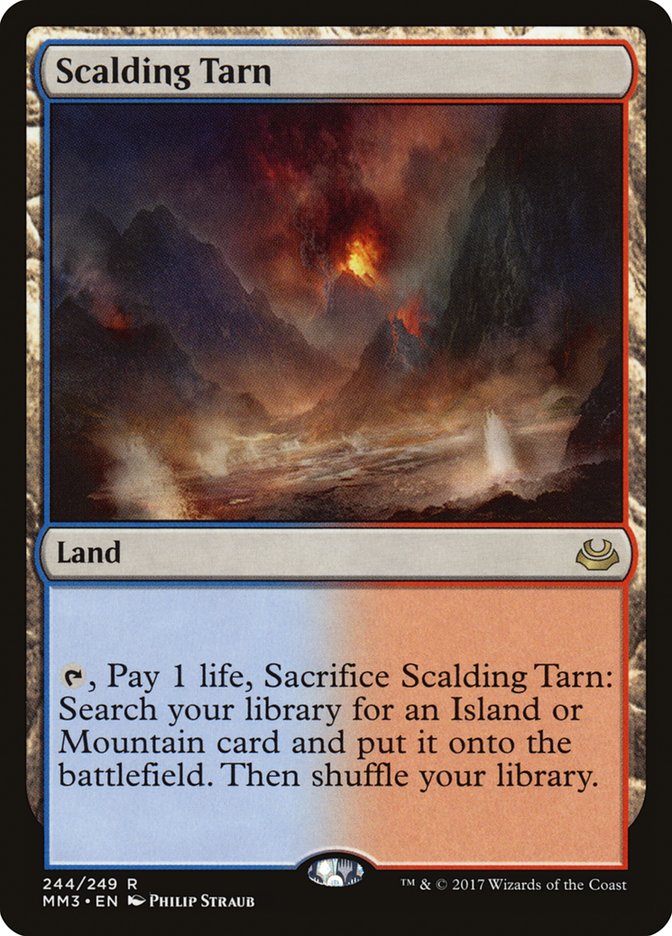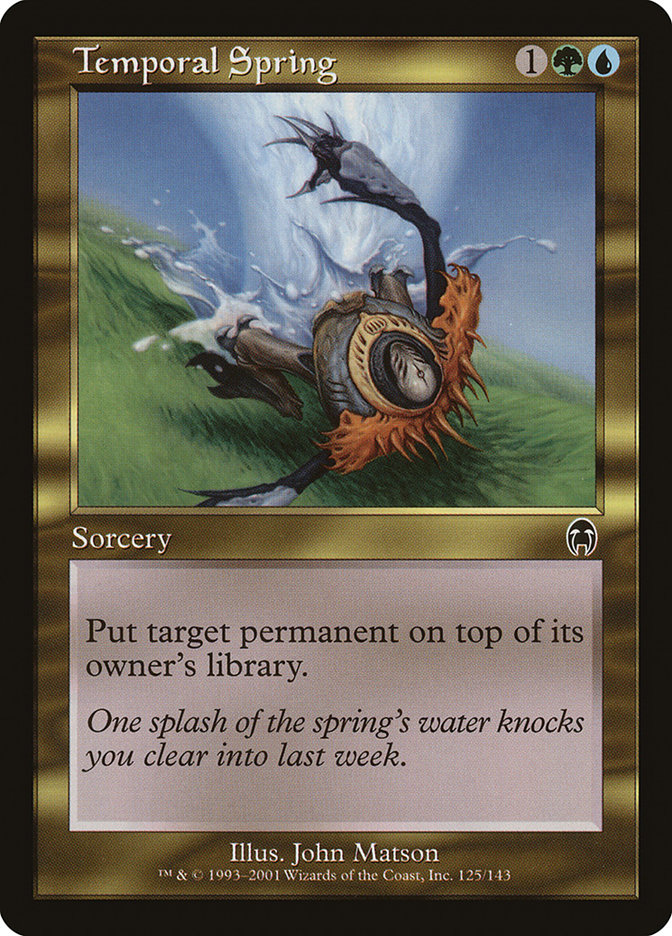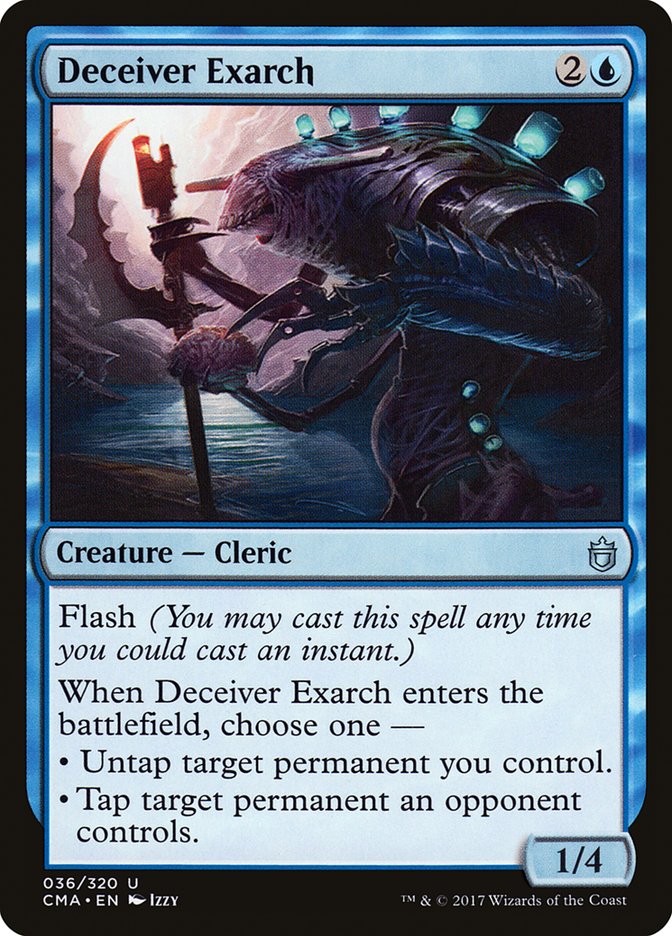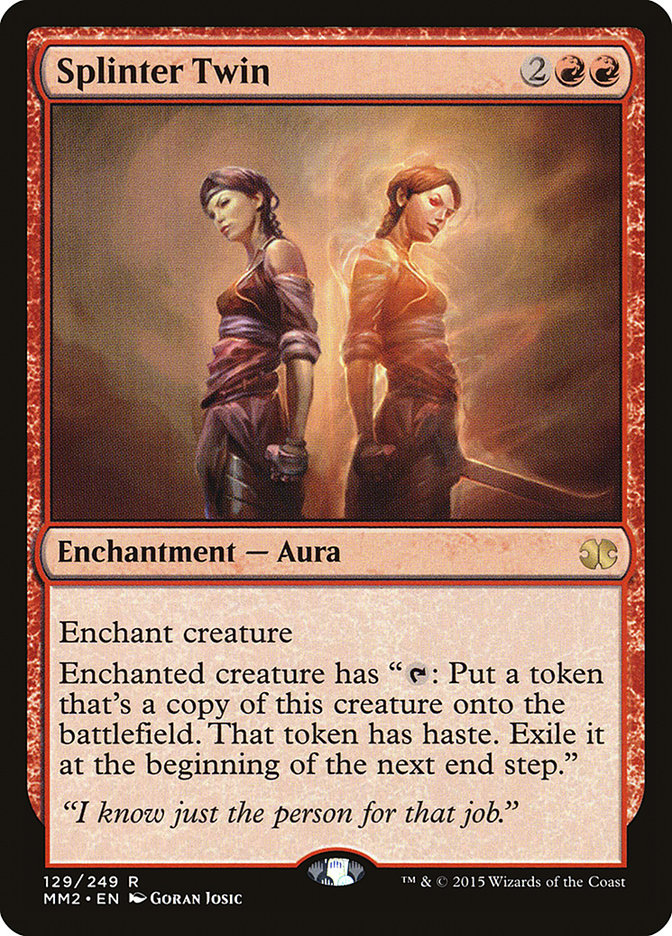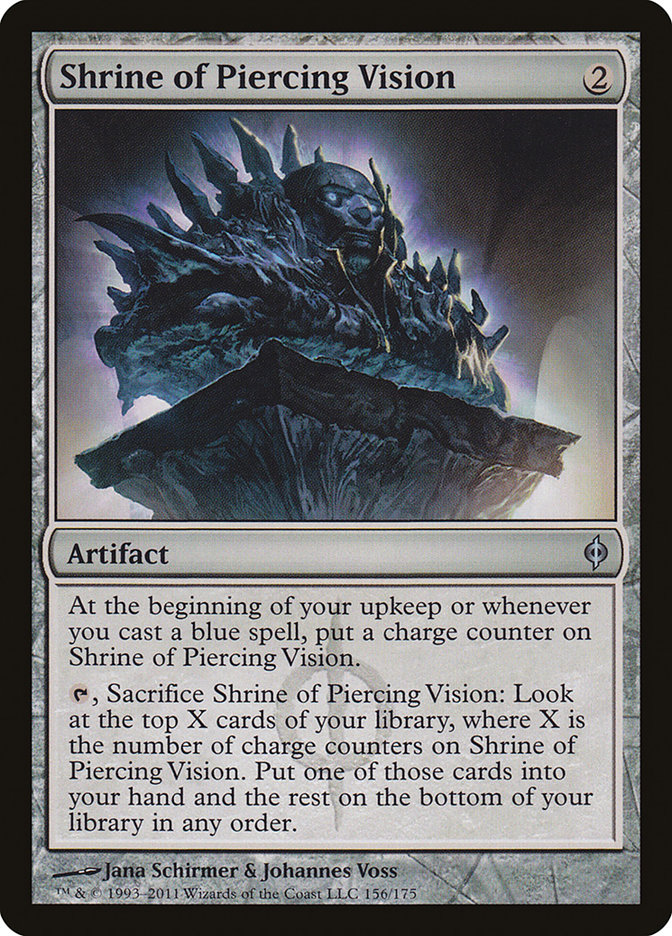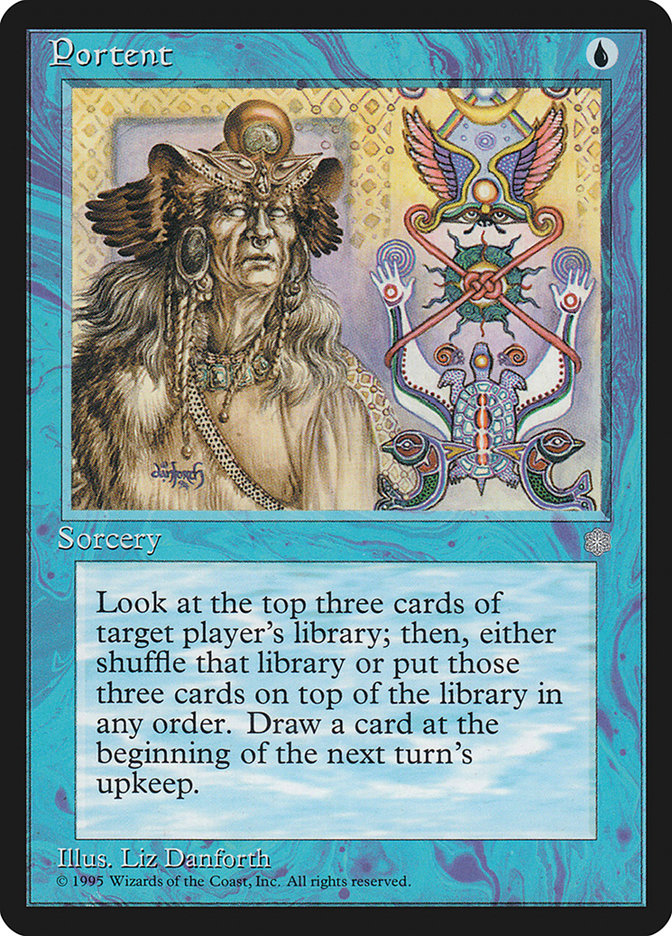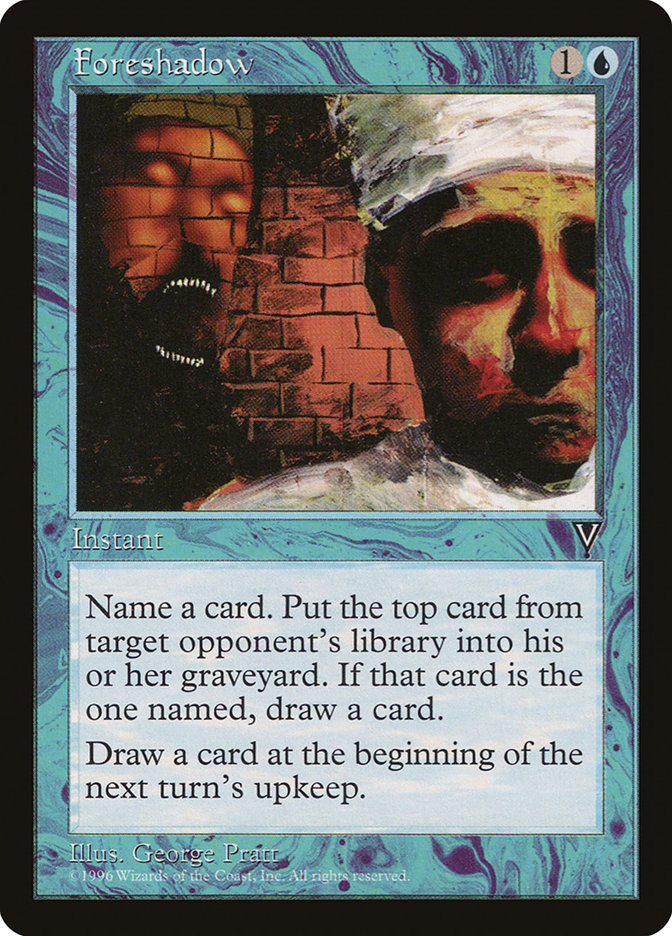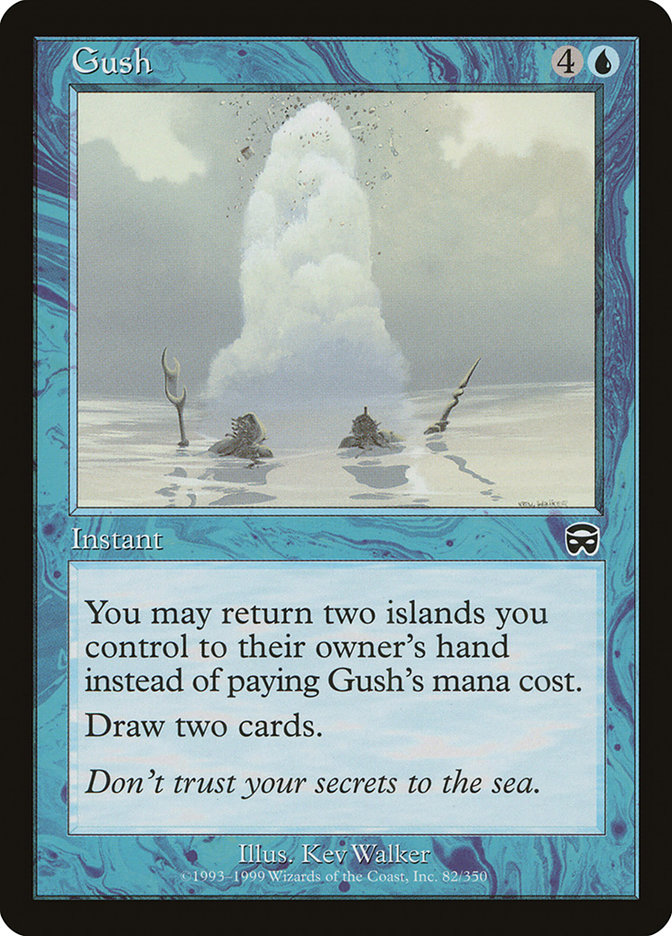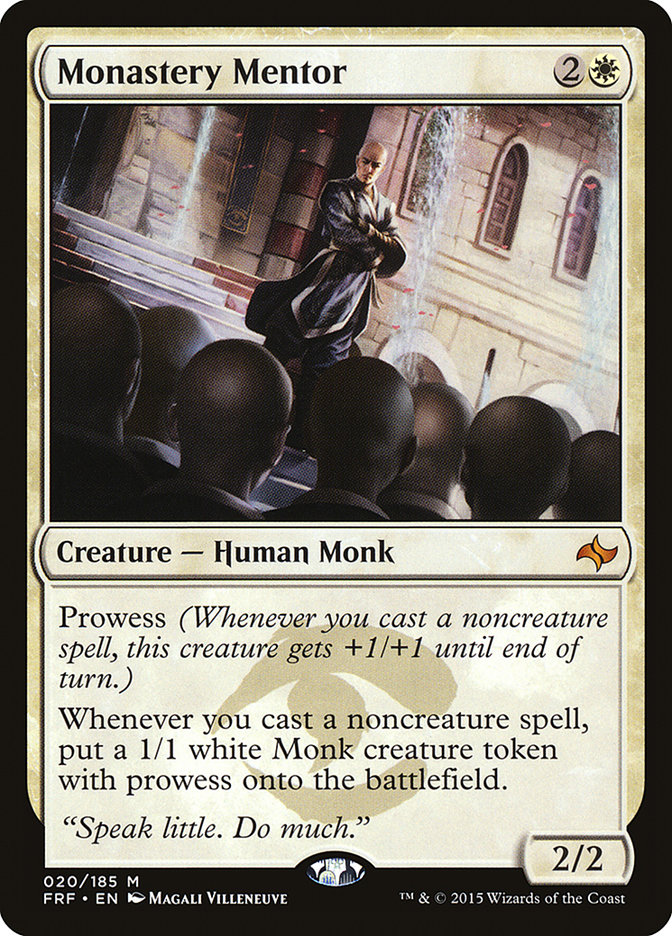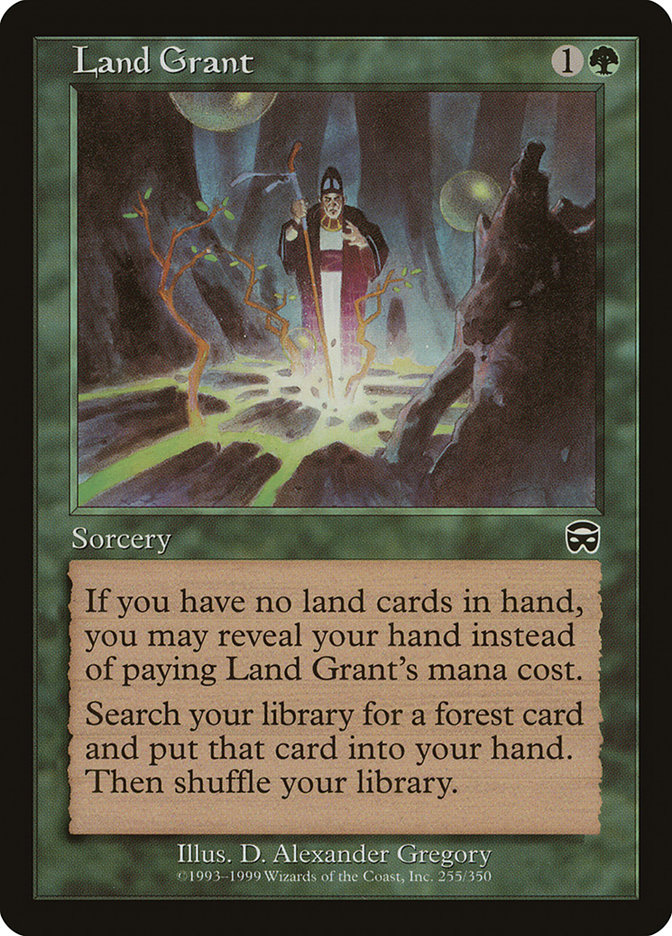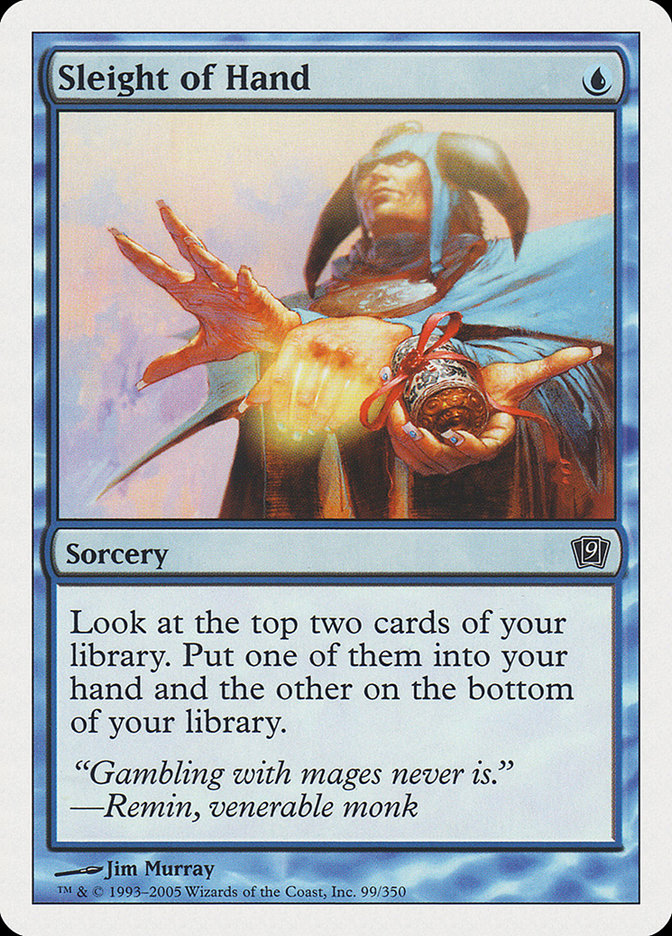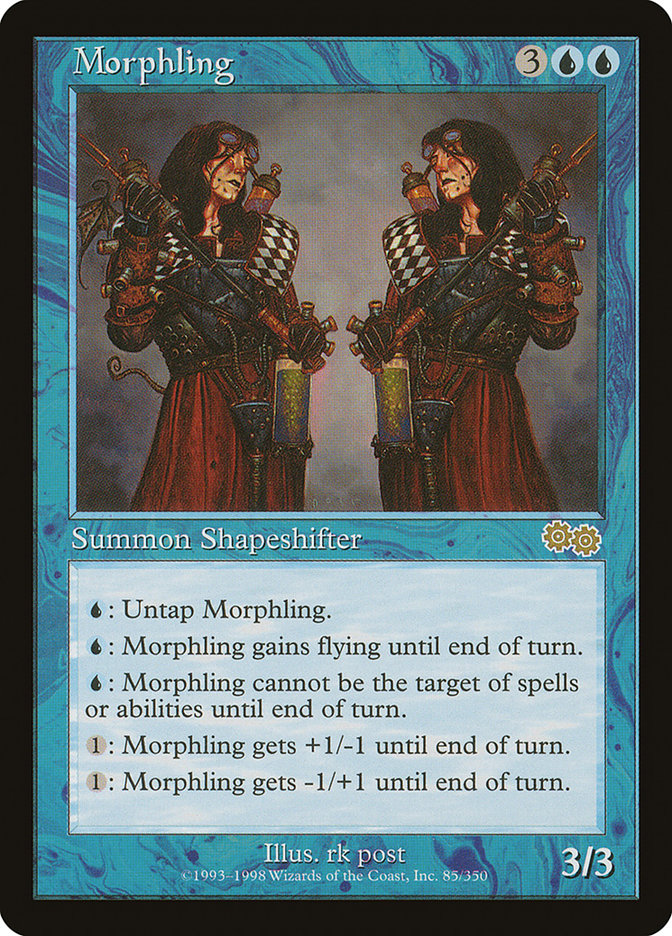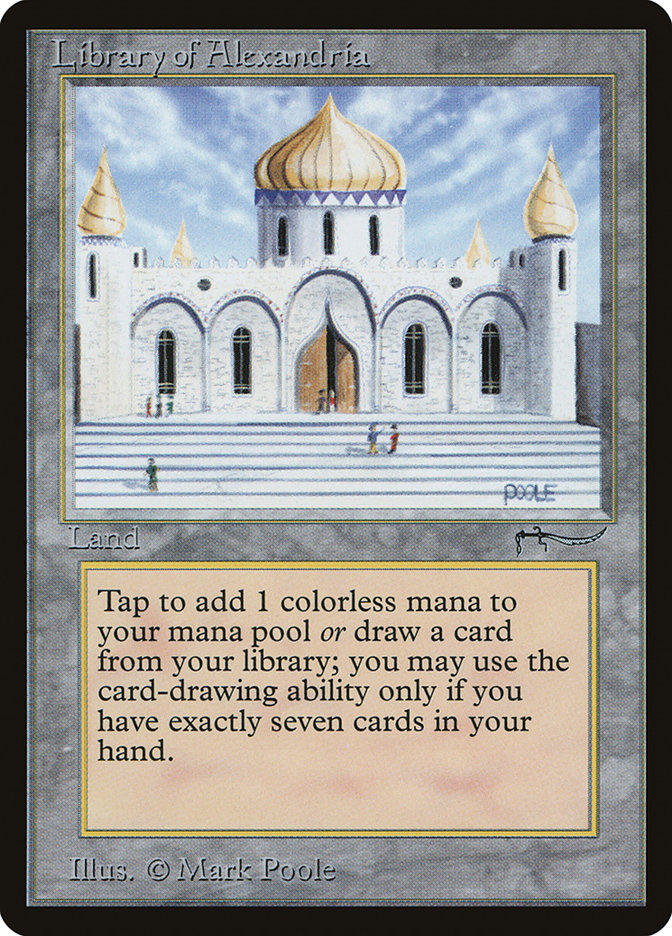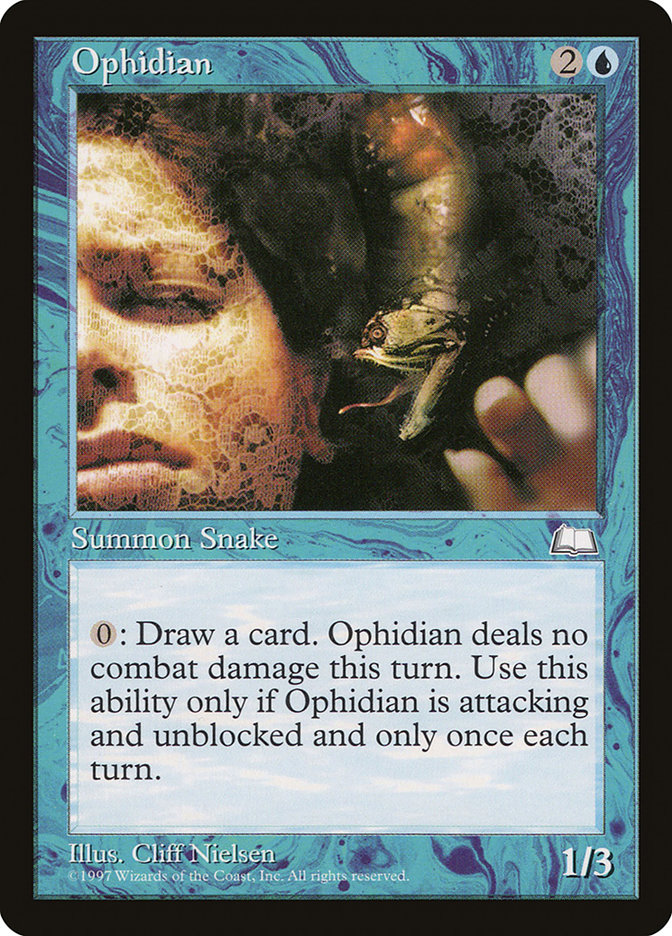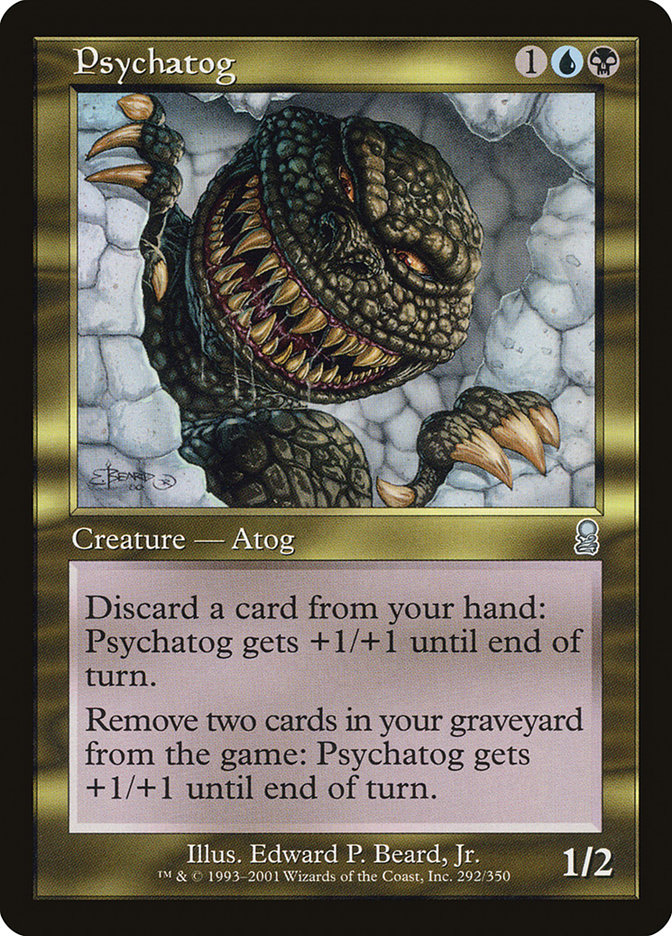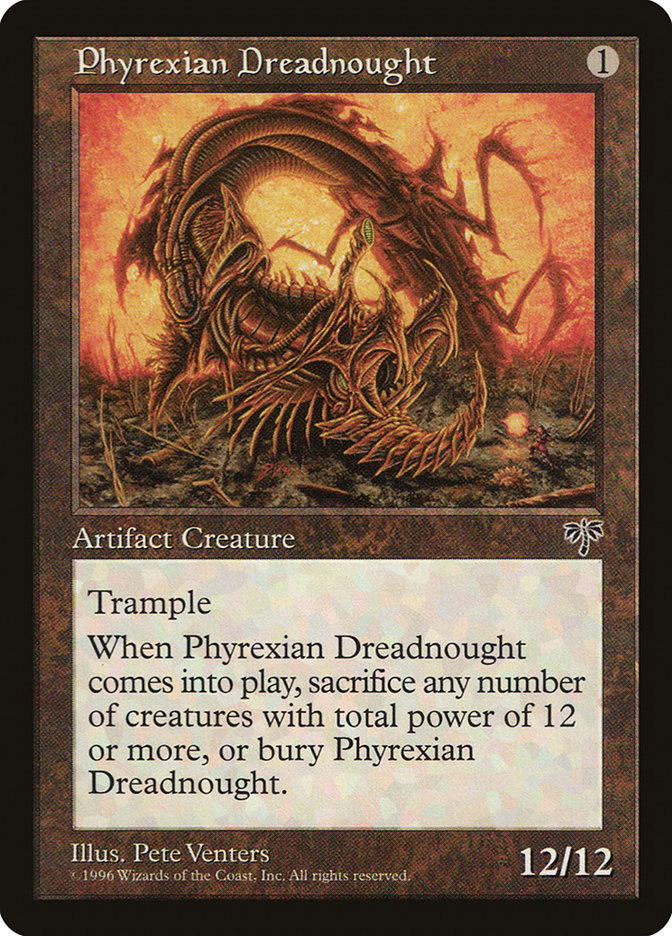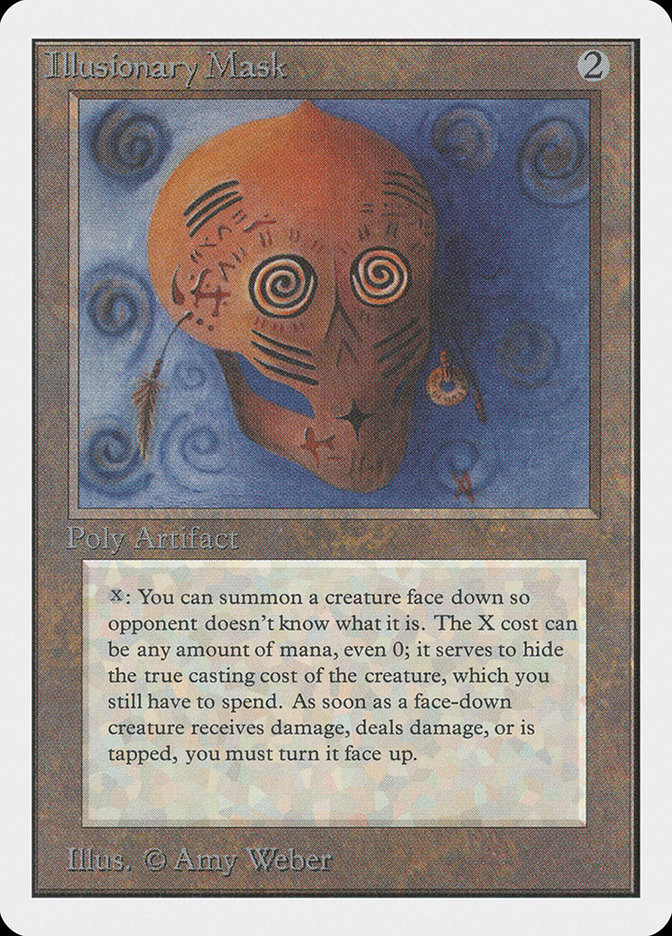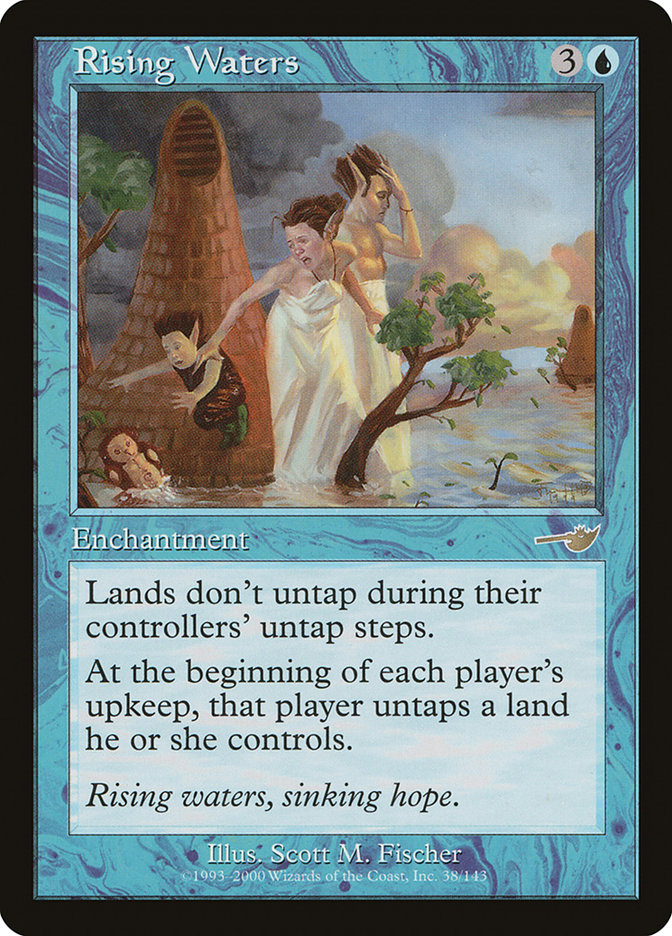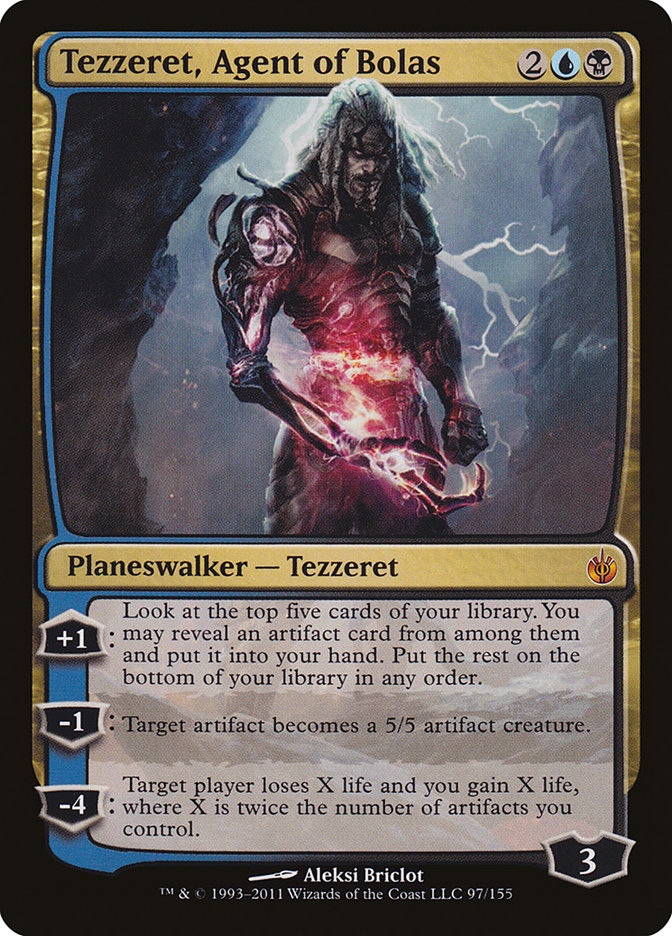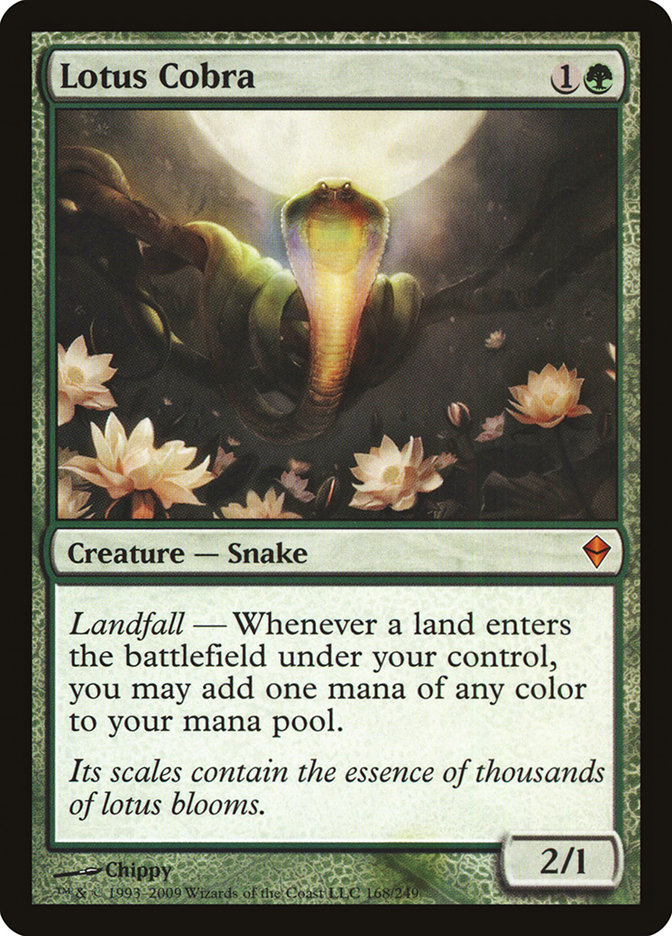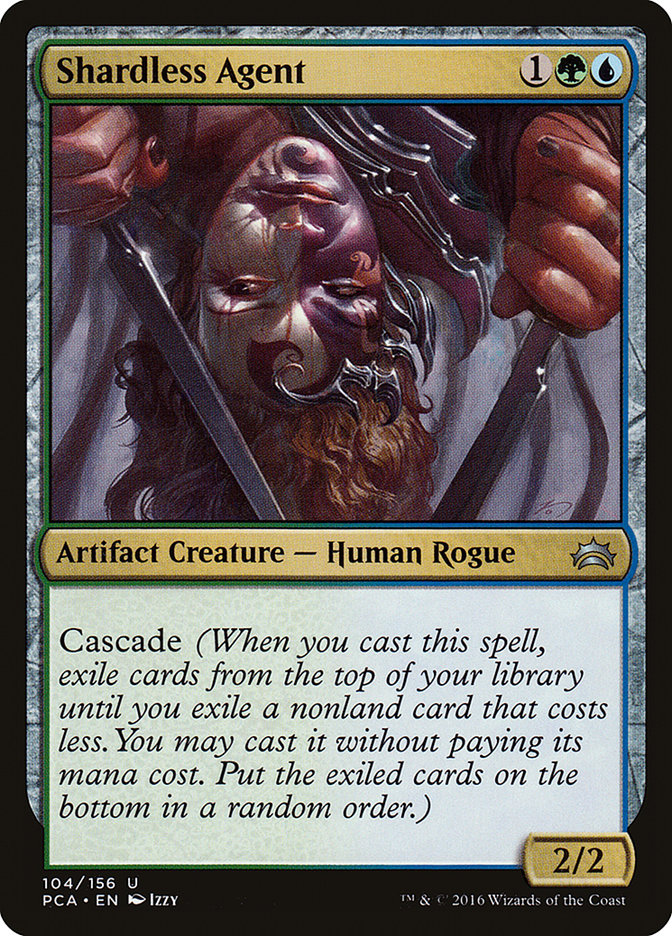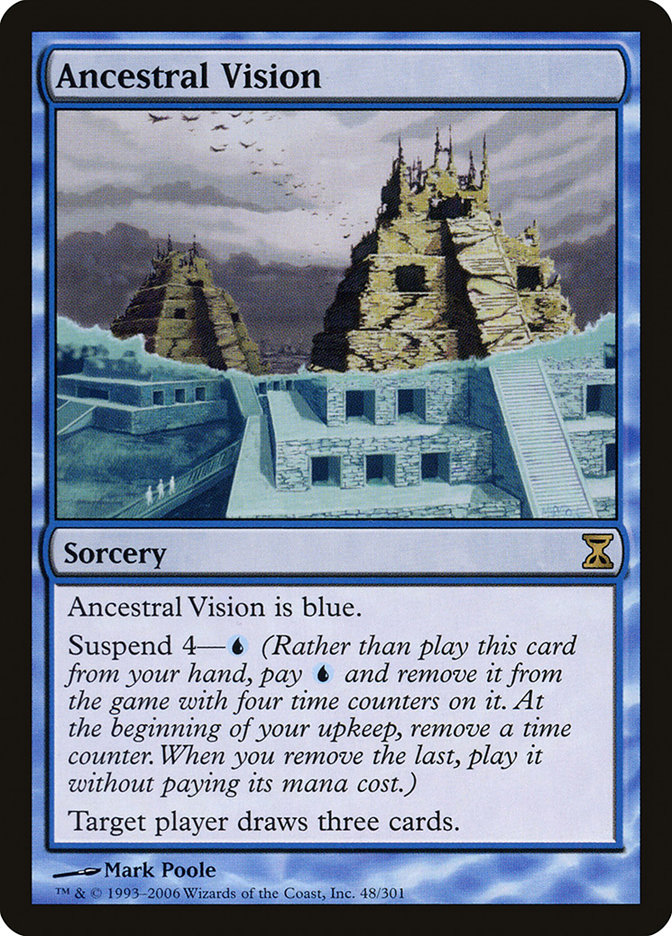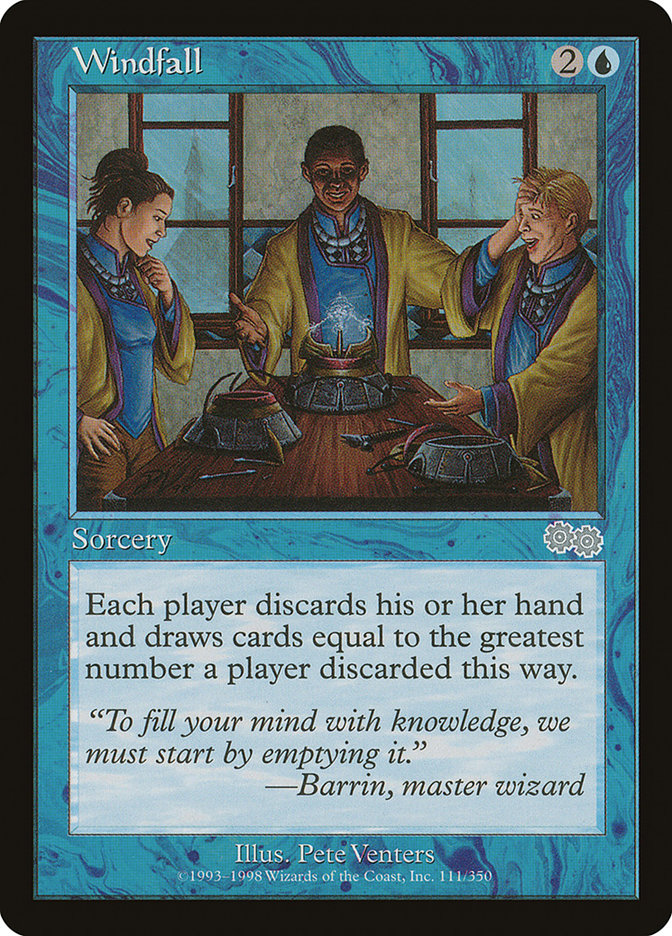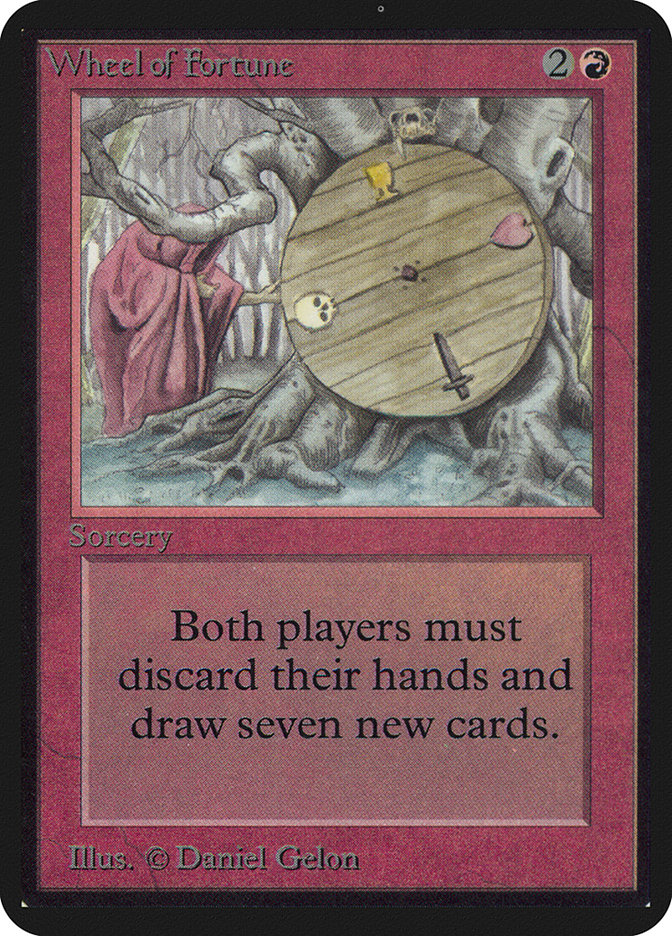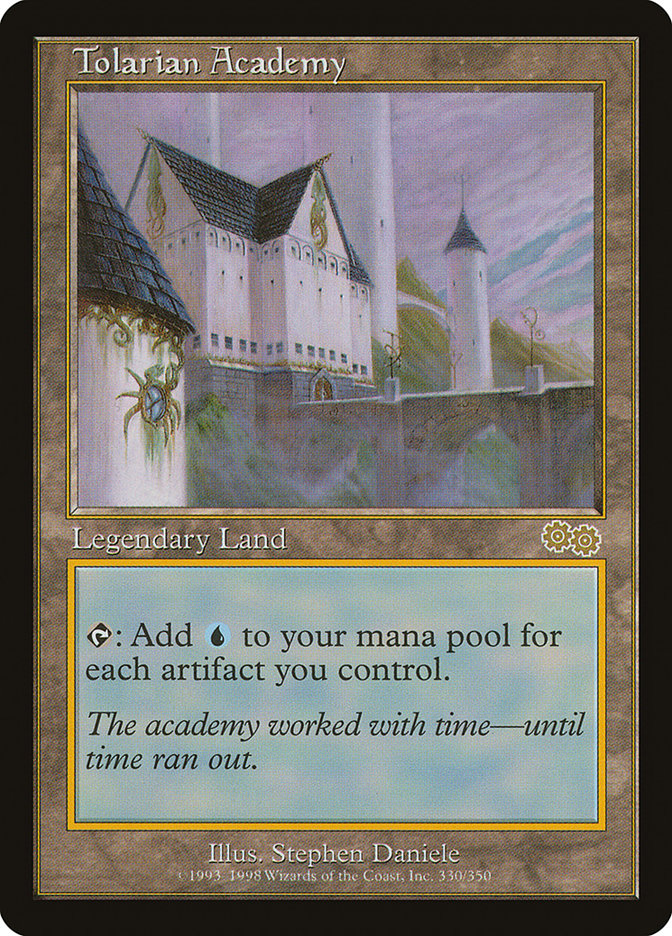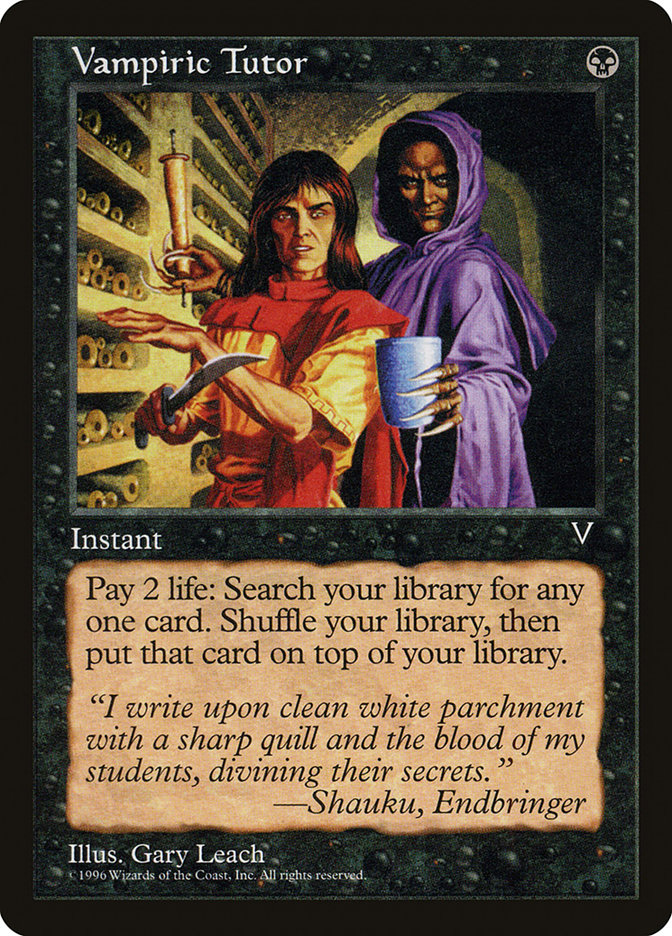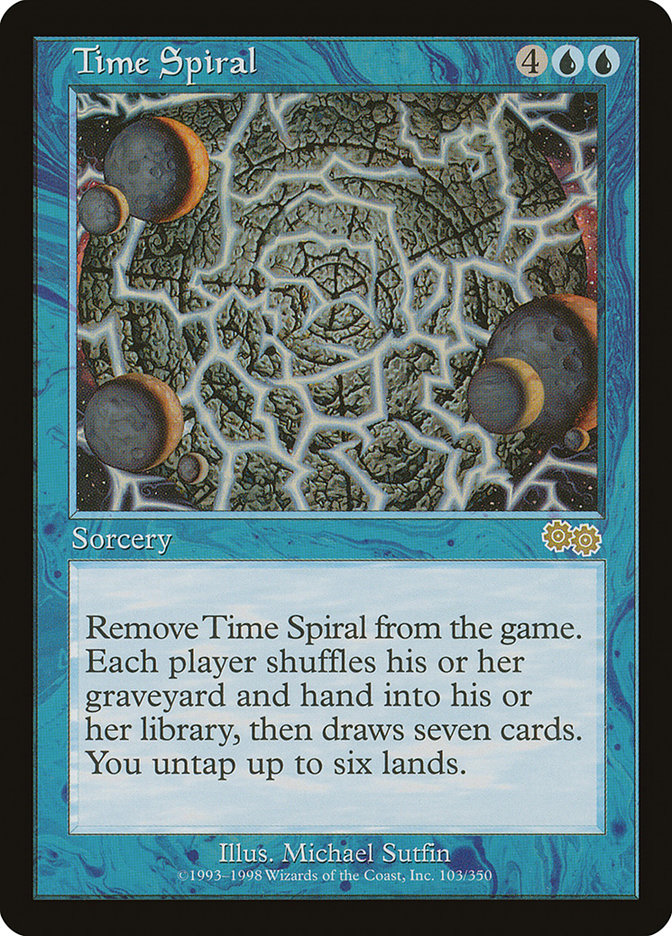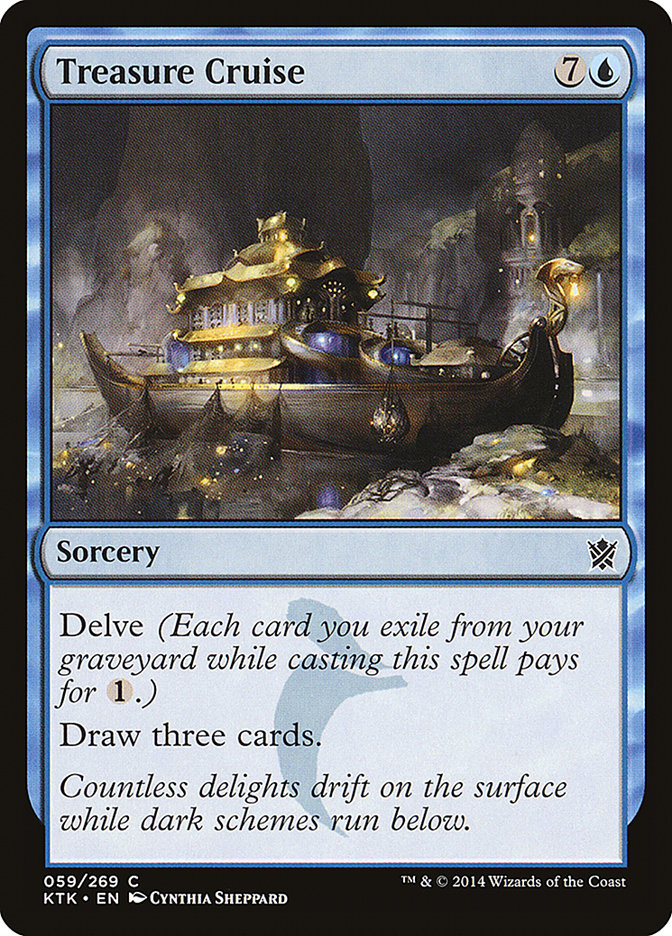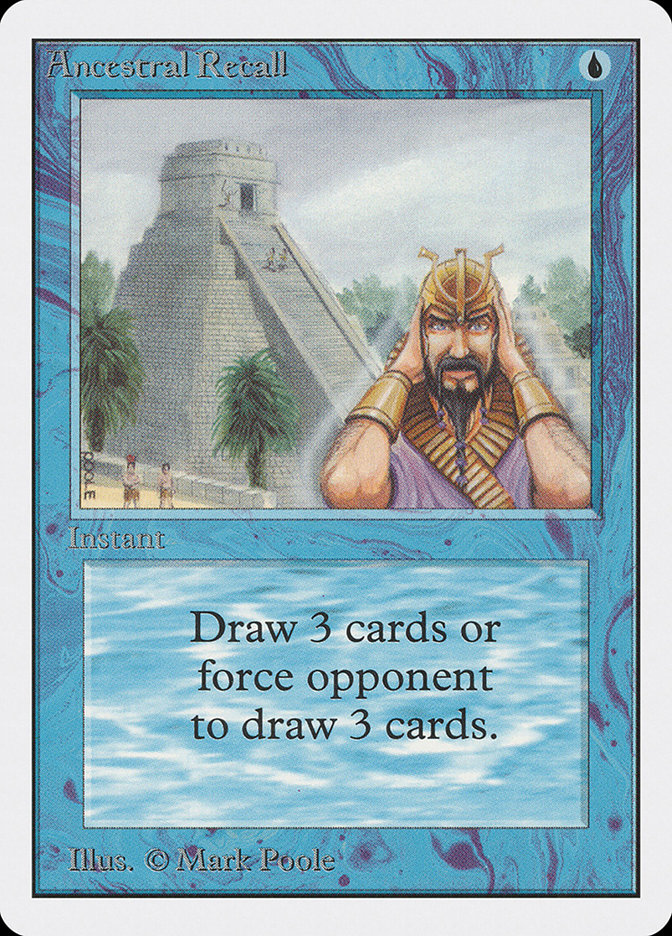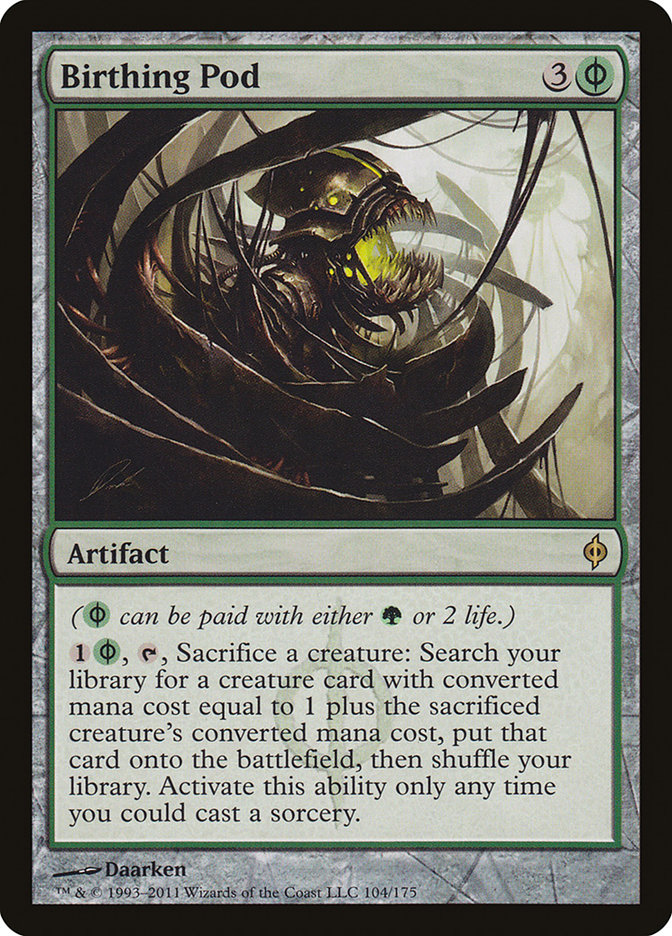Now we’re really getting down to it.
How incredible is the best of the best blue has to offer?
Well, how about #15 actually being…
#15: Ponder
If Ponder is number fifteen, what the hell are the other fourteen cards?!
As good as Ponder is, it’s really fetchlands that have really pushed the
card over the top. The ability to find a card you really want, then shuffle
the ones you don’t want away with fetchlands, is just so amazingly
efficient.
Often, the card is associated with Legacy Delver decks, where the card can
help rearrange the top of your deck, ensuring Delver flips after a single
turn.
Ponder being a sorcery is actually frequently upside in these decks. There
are no end of instants for powering up Tarmogoyfs, but sorceries are harder
to come by.
For instance:
Creatures (12)
Lands (18)
Spells (30)
- 4 Brainstorm
- 4 Lightning Bolt
- 4 Force of Will
- 3 Daze
- 4 Stifle
- 1 Temporal Spring
- 1 Life from the Loam
- 3 Spell Snare
- 4 Ponder
- 2 Dismember
Sideboard

See! People who play Temporal Spring are clearly willing to pay a
premium for sorceries…
Ponder’s positive synergy with fetchlands is hardly reserved for powered
formats or tempo-based aggro decks. You know who loves this efficient of
library manipulation?
Combo decks.
Creatures (9)
Lands (23)
Spells (28)
- 3 Mana Leak
- 4 Ponder
- 3 Into the Roil
- 3 Dispel
- 4 Splinter Twin
- 4 Preordain
- 3 Gitaxian Probe
- 4 Shrine of Piercing Vision
Sideboard

While Splinter Twin combo peaked in Modern, it was still a force to be
reckoned with in Standard, despite having to compete with Caw-Blade and
Primeval Titan + Valakut, the Molten Pinnacle.
It’s a small point, but Ponder (and all cheap cantrips, really) are
excellent ways to trigger cards like Shrine of Piercing Vision, giving you
more for your money.
While it’s a lot harder to play Ponder without fetchlands, it has been done
to great effect on plenty of occasions. For instance, there was a stretch
where Merfolk decks famously shifted to Ponder over Ancestral Vision, much
to the chagrin of Faeries players everywhere.
Creatures (23)
- 4 Lord of Atlantis
- 4 Merrow Reejerey
- 4 Silvergill Adept
- 2 Sower of Temptation
- 2 Sygg, River Guide
- 3 Stonybrook Banneret
- 4 Cursecatcher
Lands (23)
Spells (14)
Sideboard

What’s this? No shuffle effects?
Remember, worse comes to worse, you can use a second Ponder to build a
shuffle effect. Besides, you don’t necessarily need to shuffle anything
away. Merfolk didn’t exactly ask that much of it anyway. They just want to
slightly smooth out their earlygame draws, trying to curve out on turns 2,
3, and 4, while helping make up for their lack of one-drops.
You know, like the card was intended to be used.
Talk about an underrated gem! Portent was amazing in Standard, albeit
frequently misunderstood. It would be too strong for Modern, and the only
reason it doesn’t see more play in Legacy is both Brainstorm and Ponder
being legal alongside it (though it does show up some). Finally, with
Preordain legal, there’s still another cantrip in the way for Vintage,
though the “slow-trip” part would be especially painful there.
Remember, this isn’t just a slow-trip version of Ponder, though. You can
actually target your opponent with it, potentially exacerbating a
mana-light draw on their part, or sealing up a game on a crucial turn, when
you just don’t want them to draw a particular card for one or two more
turns.
Spells (32)

One of the greatest deckbuilders of all-time, Hall of Famer Alan Comer,
began a manabase revolution with his Turbo Xerox deck (so named for how
quickly everyone at the card shop made their own xerox copies since it was
so different yet so cheap to build) and its seventeen land for casting all
these three and four-cost cards.
When the rest of the world was finally figuring out how to play with
“enough” land after years of not playing enough, Alan conceived of a new
way to think about manabases involving playing less than conventional
wisdom thought was possible.
Cantrips, some of which could draw you lots of cards (like Foreshadow +
Portent), could draw you into the lands you needed, but sometimes you just
used one of your Counterspells to stop whatever they were doing for the
turn and give yourself another turn to try to draw land!
#14: Gush
Let me make sure I understand this right. I can spend zero mana and draw
two cards?
Actually, how about spending negative one?
The ability to net mana by Gushing when you haven’t played a land for the
turn and don’t have one has been quite good in every format the card has
been able to be played in. In recent times, Gush was abused hardest by
Monastery Mentor, leading to both cards being restricted.
Still, the most iconic Gush pairing has still got to be with Quirion Dryad,
giving rise to the “Grow” variety of decks, also conceived of by Alan
Comer. Alan had already shocked the world with a blue deck with just
seventeen land, but no one saw this next monster coming, even from him.
Creatures (15)
Lands (10)
Spells (35)
Sideboard

Missing top 8 on tie-breaks, Comer’s Miracle Grow deck took the Turbo Xerox
ideas seemingly to an extreme.
Ten land?!
How could he only be playing ten land?
Well, Land Grant effectively made it fourteen, which was still low, but now
high enough to think you’ll consistently get at least one.
With so many strong cantrips for one mana, as well as a mana curve that
stops at two, the mana requirements for this deck were even lower.
Comer’s deck inspired me so much, I immediately started work on using Gush
in Vintage. I quickly realized the strategy would flip the table in
Vintage, and that all the previous assumptions about the format would need
to be rethought.
While the format was overrun by really clever control players, I just could
not imagine how they could realistically fight a Vintage-powered Grow deck.
Their cards were just too slow and expensive.
While some elements of the Vintage community were extremely resistant to
the idea of the format not being about their precious The Deck and Keeper
descendants anymore, I tried telling everyone I could about the strategy
and why I believed Gush was too strong to be unrestricted in Vintage.
This is the list I used to win the 2002 Vintage Championship:
Spells (43)

Yeah, that’s right, Library of Alexandria and just eight other lands.
Talk about a nice combo with Gush!
One big difference I had found with Gush in Vintage was how much you really
wanted a single threat to win with, and then all cantrips and permission.
Nickel and diming people with 2/2s was just not going to cut it. Ophidian
gave me a second threat that could potentially win the game, if only I
could protect it.
Of course, players would go on to improve the concept a great deal, with
Psychatog proving a superior additional threat to end the game once
Polluted Delta and the rest of the Onslaught fetchlands were
legal.


I used to play Vintage at all the Pro Tours, just battling the greatest
Vintage players in the world after the end of Swiss. This deck was the
breaking point. After years of battles, this was the deck that broke them,
that had turned the initially angry “That’s not a realistic deck!” chanters
into converts once I challenged them to beat it with any of their other
decks.
While most of the Vintage community at the time never actually found the
Mask/Nought deck, most of them didn’t realize that control wasn’t actually
playable in the format to begin with (at least if everyone knew about Grow
and how to update Hurkyl’s Recall combo) and had a metagame in mind that
couldn’t be further from the truth among those in the know.
Gush has been restricted and unrestricted back and forth more times than
most, but it has also enjoyed no shortage of success in even the lowest
powered formats.
Sigurd’s mono-blue Masques Block deck was built around
the powerful synergy of Rising Waters and cards that could be played by
bouncing Islands, instead of their costs.
Rising Waters may be a poor man’s Winter Orb, but it was especially hard to
get off the table (not to mention legal). Bounce was especially effective
with it, really taxing people for the mana spent on their Rebels or
whatever.
#13: Jace, the Mind Sculptor
I could write books about
Jace, the Mind Sculptor, write
songs
about his greatness. What I can’t possibly do, is cover every deck Jace
ever made good in a single day.
First, just to pick a memorable one, here’s the Pro Tour debut of one of
the most dominant decks of all-time, Caw-Blade:
Creatures (8)
Planeswalkers (7)
Lands (17)
Spells (28)
- 4 Plains
- 5 Island
- 3 Mana Leak
- 4 Day of Judgment
- 4 Spell Pierce
- 1 Deprive
- 4 Preordain
- 1 Stoic Rebuttal
- 1 Sylvok Lifestaff
- 1 Sword of Feast and Famine
Sideboard

While this strategy would eventually bring about the only Standard bannings
of basically an entire decade, it wasn’t the only deck to perform well at
PT Paris.
The tag team of Tezzeret and Jace were the two pillars of my deck from that
same event:
Creatures (2)
Planeswalkers (7)
Lands (22)
Spells (29)

Wow, was this deck fun!
While my deck matched up well against Caw-Blade at this event, in the weeks
that followed, they adopted a substantial increase in Divine Offerings and
I had no way to regain the percentage they were able to take. Once
Phyrexian mana brought Mental Misstep, Batterskull, and Dismember, there
wasn’t much to talk about.
Playing Jace ahead of schedule has taken many forms, not the least of which
is immediately following Lotus Cobra, a one-two punch that fueled many
Standard decks, of course, but also Zendikar Block Constructed,
such as Paulo Vitor Damo Da Rosa’s first Pro Tour winning deck, an update
to a Michael Jacob MTGO list.
Creatures (14)
Planeswalkers (4)
Lands (18)
Spells (24)

Jace into fetchlands…all is right in the world!
Of course, why stop there?
The only thing better than shuffling away lands you don’t want is cascading
one away and then hitting the Ancestral Vision you put there for safe
keeping!
Here is just one of the countless Legacy Jace decks:
Creatures (14)
Planeswalkers (3)
Lands (22)
Spells (21)

Jace has also proven himself a dominant force in Vintage time and again.
Here is just one of Jace’s many, many big victories in Magic’s most
powerful format:
Creatures (3)
Planeswalkers (2)
Lands (18)
Spells (37)
- 1 Sensei's Divining Top
- 1 Brainstorm
- 3 Mana Drain
- 1 Plains
- 4 Force of Will
- 3 Swords to Plowshares
- 1 Sol Ring
- 3 Island
- 1 Time Walk
- 1 Ancestral Recall
- 1 Moat
- 4 Standstill
- 1 Crucible of Worlds
- 1 Black Lotus
- 1 Mox Pearl
- 1 Mox Sapphire
- 1 Engineered Explosives
- 1 Mindbreak Trap
- 3 Mental Misstep
- 1 Flusterstorm
- 1 Supreme Verdict
- 1 Treasure Cruise
- 1 Dig Through Time

Trust me, I know these Modern kids are all high on Teferi, Hero of
Dominaria in these Modern times, and he’s no slouch.
However, he just does not have Jace’s versatility of excellence, Jace’s
ability to transcend all formats. He’s got some great spots, but Jace is A+
on every team.
#12: Windfall
Ahhh yes, despite Wheel of Fortune being the best red card of all-time,
Windfall doesn’t even crack blue’s top ten.
Sure, there’s no problem here!
Windfall hasn’t had all that many formats where it’s been legal (as it so
quickly was banned most everywhere), but it did have a very bright time in
the spotlight, however brief.
Lands (19)
Spells (41)
- 4 Stroke of Genius
- 3 Mind Over Matter
- 3 Abeyance
- 2 Scroll Rack
- 4 Mana Vault
- 3 Power Sink
- 4 Windfall
- 3 Intuition
- 3 Voltaic Key
- 4 Time Spiral
- 4 Mox Diamond
- 4 Lotus Petal
Sideboard

Pro Tour Rome 1998 was one of the most busted formats ever, with like ten
different fast combo kill decks, dead in the middle of combo winter.
Despite Hovi seeing his way back to the Pro Tour winner’s circle, I think
Erik Lauer built the best true Academy deck for that event. It was very
similar but with an important inclusion:
Lands (21)
Spells (39)
- 1 Stroke of Genius
- 2 Counterspell
- 3 Vampiric Tutor
- 1 Mind Over Matter
- 3 Abeyance
- 3 Scroll Rack
- 4 Mana Vault
- 4 Impulse
- 4 Windfall
- 4 Time Spiral
- 4 Mox Diamond
- 4 Lotus Petal
- 2 Urza's Bauble
Sideboard

Geez, Luis.
Not even close to cracking the top 25?
Tough crowd.
As for Standard?
Well, Windfall decks in Standard looked basically the same as they did in
Modern. In the finals of the Michigan State Championship, that year, I won
game 2 on the first turn, avenging a turn 1 loss in game 1. Game 3 was a
long drawn out battle of land destruction lasting until turn 4 (despite the
two of us drawing over 100 cards combined).
#11: Treasure Cruise
I don’t mean to focus on decks I played, but I just happened to have had
the pleasure of playing most of the broken blue cards in a lot of big
events.
Here’s the list I used to secure my most recent worlds finals loss, during
the brief period where you could just play four Ancestral Recalls in your
Modern deck for no reason (and yet, most people didn’t).
Creatures (13)
Lands (18)
Spells (29)

Don’t try to understand it.
It’s kind of too bad Birthing Pod got caught up in such a bad crowd. To be
discussed in the same breath as cards like Treasure Cruise?
I wonder what could have been…
As for Standard, Treasure Cruise was merely excellent, perhaps nowhere as
loudly as in Jeskai Ascendancy decks. While Modern variations had a more
distinctly combo vibe, Standard builds were much more focused on the tokens
aspect.
Creatures (4)
Planeswalkers (4)
Lands (20)
Spells (32)

Honorable mention to Jace, Vryn’s Prodigy.
While Jace, Vryn’s Prodigy is a slam dunk top 50 pick, it’s just not
realistic for blue creatures to try to climb.
With just ten blue cards remaining, I’m curious if anyone can guess the
list. I’m guessing there’s at least one curveball that might surprise
people, but once you hear it, I’m guessing you’ll agree…


